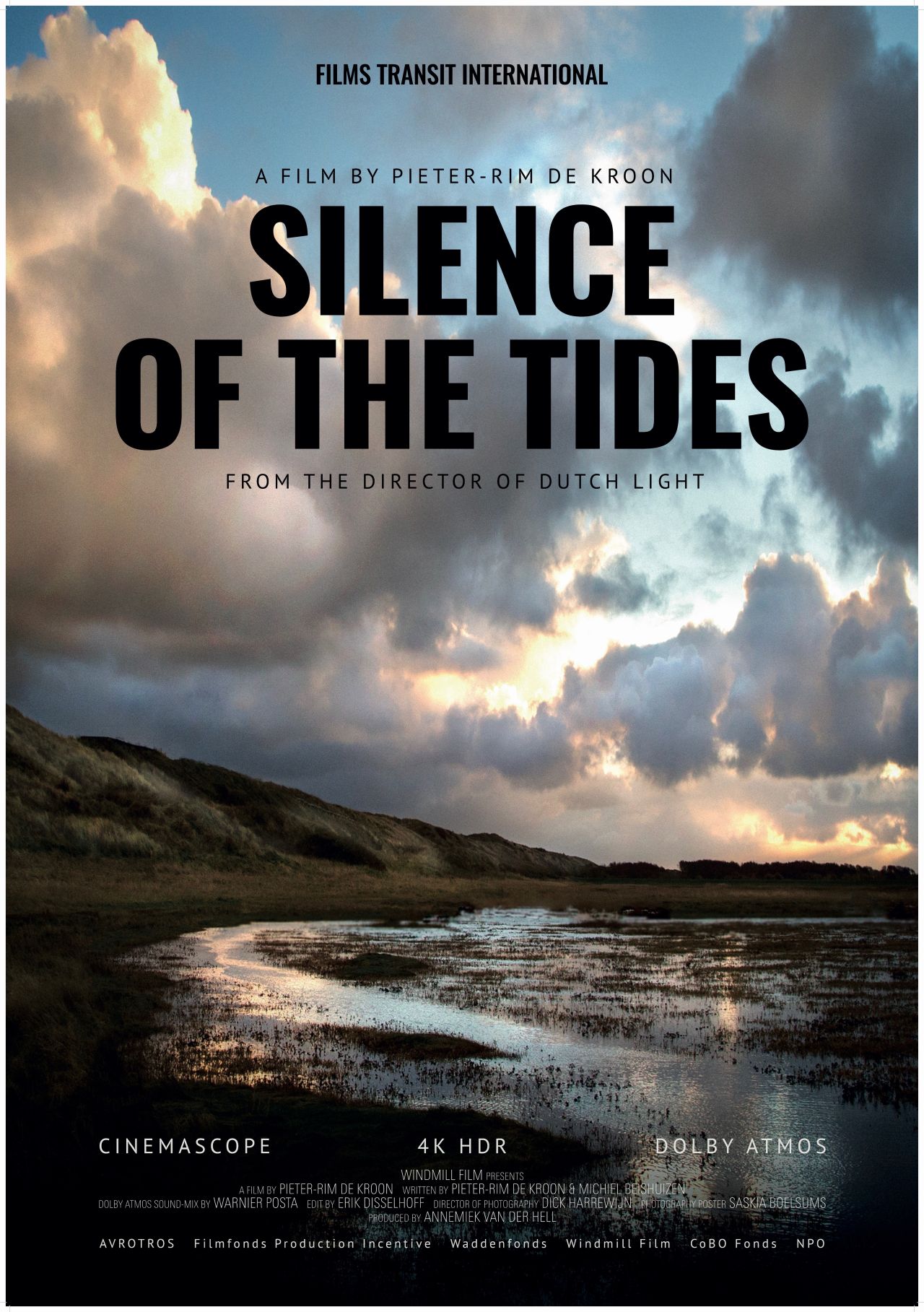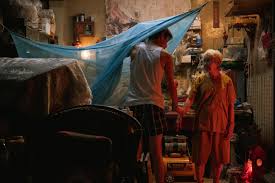

Although it is the world’s largest uninterrupted intertidal sea area and extends along the coasts of Germany, the Netherlands (the two countries I know best) and Denmark, I did not know much about the Wadden Sea. Consequently, I would have not expected to be so impressed by the pictures and scenes that this documentary showed.
The “Silence of the Tides” is a cinematic tribute to the Wadden Sea, presenting a combination of calming and thrilling scenes about the interplay between humans and the sea. As scene after scene is shown, we experience the in- and exhaling of the tides, and become a witness to the contrasts that life in – and close to – the Wadden Sea has to offer: The storm and the silence, death and birth, huge masses of people (and animals) and never-ending empty fields, Personally, this movie gave me a nice peek into a part of the world that we live close by but never really notice as something “special”.
The documentary is characterized by amazing time-lapses and shots of animals above and below the sea. Putting together scenes in a way that they tell a story, using close-ups and shot from far away, the movie manages to use different ways of communicating and moving the audience – without using words. The documentary is completely unnarrated, the only speech that is audible comes from the people who were filmed during their activities, untouched and natural. This fits perfectly with the mood of the movie and a thorough narration would only distract from the feeling and story the pictures are conveying by themselves. Silence of the Tides shows beautifully that nature can be wild and chaotic but also sometimes geometric and full of repeating patterns, with a rarely moving camera leaving you to your own observations and discoveries in a scene.
Since our brain is trained to perceive changes and differences (as psychologists we know: motion overrides all other aspects such as colour or shape), a moving camera would only reinforce that. Now, that the camera dictates nothing, you have to decide for yourself what you look at, it is a walk without paths. But the movie does not only show the Wadden Sea but also its inhabitants: Scientists from the Netherlands Institute for Sea Research, farmer and tourists. Throughout the movie, we meet “Postman Hannie” several times as he takes us with him on his small locomotive, a lore, along the small German Wadden Islands, the Haligen below Sylt, where a few inhabitants live without the protection of the dikes.
Directed by: Pieter-Rim de Kroon
This movie is out now in a cinema near you.

Although it is the world’s largest uninterrupted intertidal sea area and extends along the coasts of Germany, the Netherlands (the two countries I know best) and Denmark, I did not know much about the Wadden Sea. Consequently, I would have not expected to be so impressed by the pictures and scenes that this documentary showed.
The “Silence of the Tides” is a cinematic tribute to the Wadden Sea, presenting a combination of calming and thrilling scenes about the interplay between humans and the sea. As scene after scene is shown, we experience the in- and exhaling of the tides, and become a witness to the contrasts that life in – and close to – the Wadden Sea has to offer: The storm and the silence, death and birth, huge masses of people (and animals) and never-ending empty fields, Personally, this movie gave me a nice peek into a part of the world that we live close by but never really notice as something “special”.
The documentary is characterized by amazing time-lapses and shots of animals above and below the sea. Putting together scenes in a way that they tell a story, using close-ups and shot from far away, the movie manages to use different ways of communicating and moving the audience – without using words. The documentary is completely unnarrated, the only speech that is audible comes from the people who were filmed during their activities, untouched and natural. This fits perfectly with the mood of the movie and a thorough narration would only distract from the feeling and story the pictures are conveying by themselves. Silence of the Tides shows beautifully that nature can be wild and chaotic but also sometimes geometric and full of repeating patterns, with a rarely moving camera leaving you to your own observations and discoveries in a scene.
Since our brain is trained to perceive changes and differences (as psychologists we know: motion overrides all other aspects such as colour or shape), a moving camera would only reinforce that. Now, that the camera dictates nothing, you have to decide for yourself what you look at, it is a walk without paths. But the movie does not only show the Wadden Sea but also its inhabitants: Scientists from the Netherlands Institute for Sea Research, farmer and tourists. Throughout the movie, we meet “Postman Hannie” several times as he takes us with him on his small locomotive, a lore, along the small German Wadden Islands, the Haligen below Sylt, where a few inhabitants live without the protection of the dikes.
Directed by: Pieter-Rim de Kroon
This movie is out now in a cinema near you.



